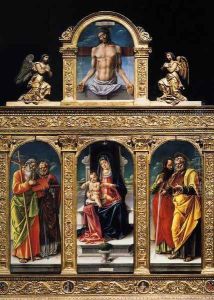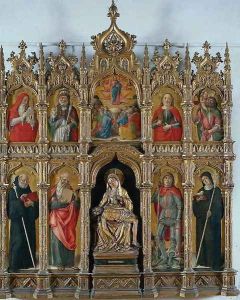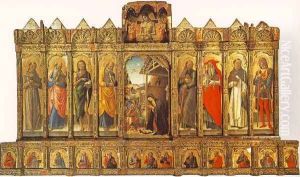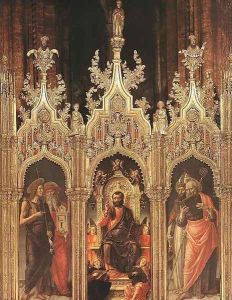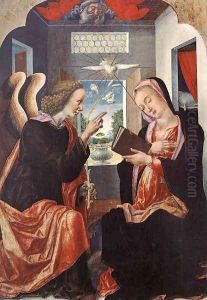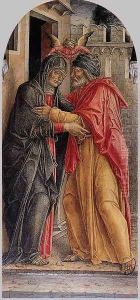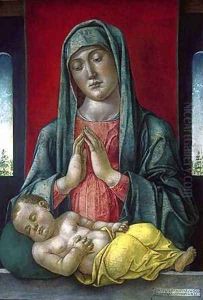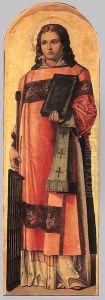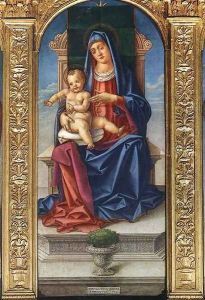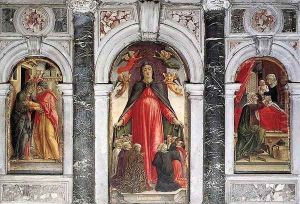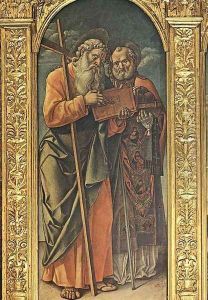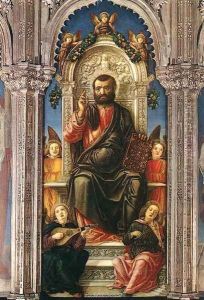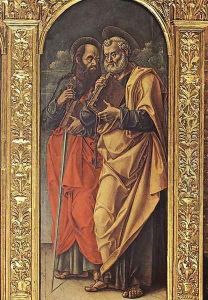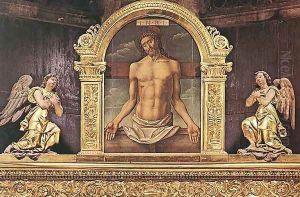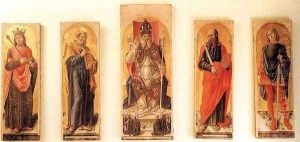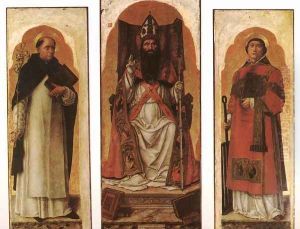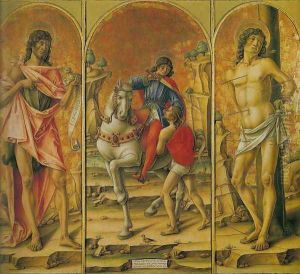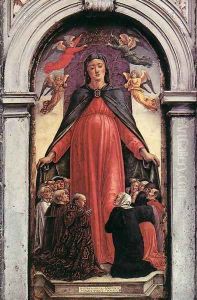Bartolomeo Vivarini Paintings
Bartolomeo Vivarini was an Italian painter, known for his significant contribution to the Venetian school of painting during the Renaissance period. Born around 1432 in Murano, an island in the Venetian lagoon famous for its glass production, Bartolomeo was part of the prominent Vivarini family of painters, which also included his brother Antonio Vivarini and his brother-in-law Andrea da Murano.
Bartolomeo's style was greatly influenced by his brother Antonio, with whom he collaborated on several works, and by the Paduan school, notably by the work of Andrea Mantegna. The Vivarini workshop became one of the most prolific in Venice, with Bartolomeo eventually taking over its direction after his brother's death.
Vivarini's art is characterized by its meticulous detail, clear, bright colors, and the use of gold leaf, which was typical of the Venetian style. He was particularly adept at depicting religious subjects, and many of his surviving works are altarpieces and other church commissions. Some of his notable works include the altarpiece of 'St. Martin and the Beggar' and 'Madonna Enthroned with Saints', which display a blend of Byzantine iconography with the emerging Renaissance perspective and realism.
Throughout his career, Bartolomeo adapted to the changing tastes and artistic trends of the time. He was among the first Venetian artists to incorporate the innovations of the Renaissance, such as the use of perspective and the study of light and shade to create depth and volume in his paintings.
Bartolomeo Vivarini's works can be found in various churches in Venice and in art galleries around the world. His contributions, along with those of his family, played a significant role in the development of the Venetian Renaissance and the evolution of Renaissance art throughout Italy. He continued to be active in the Venetian art scene until his death around 1499.
